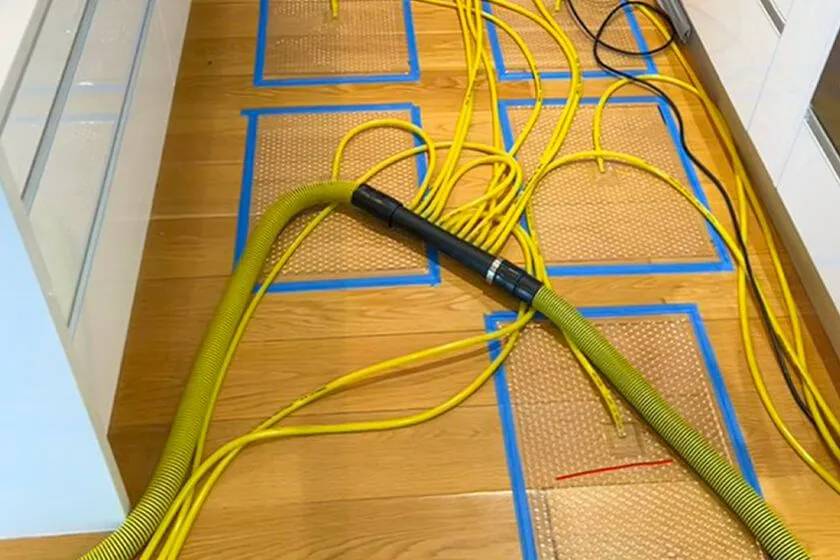
Smoke damage can be unsightly and harmful to your health. If you have smoke damage in your home, it's important to clean it up as soon as possible. There are several methods that you can use to clean smoke damage, but the most effective method will depend on the severity of the damage. Understanding the different types of smoke damage, effective cleaning methods for walls, ceilings, fittings, furnishings, contents, and the benefits of hiring professional restoration services is crucial for successful restoration.
In this blog, we will explore these key aspects to equip you with the knowledge necessary to navigate the challenges of smoke damage restoration:
Smoke damage can be caused by a variety of sources, including fires, cooking accidents, candles, and even cigarettes. The degree of smoke penetration can vary depending on the source of the smoke, heat, and the length of time the smoke was present. All types of smoke and fire damage can be harmful to your health if inhaled or ingested. Smoke is a complex mixture of toxic gases and particles which are generated from heat or actual fire. The smoke is the result of incomplete combustion. All smoke and heat will particularly affect metallic and glass surfaces and fittings, as smoke particles are magnetised and carry electrical charges; therefore, restoring quickly is a priority to prevent pitting and rusting.
There are 3 general categories of fire-related soot/smoke residues:
Smoke can also leave behind a strong, unpleasant odour that can linger for days or even weeks. The odour can be caused by a variety of chemicals that are released when materials burn.
It's important to act quickly if you have smoke damage, the longer you wait, the more difficult it will be to remove the soot and odour.
Here are some general tips for removing smoke damage from your home:
Understanding the unique characteristics of each type of smoke damage helps determine appropriate restoration approaches for different materials and surfaces. It is essential to test any cleaning method on a small, inconspicuous area before proceeding with larger sections to ensure compatibility with the surface material.
There are two cleaning methods that can be used to remove light natural substance soot damage from walls and ceilings. Most situations will require a combination of methods.
For minor protein smoke damage, you can use a solution of one part vinegar to two parts warm water to clean the area. Using a soft cloth or sponge, dip it into the vinegar solution and gently wipe the affected areas. Take care not to oversaturate the surface. Rinse the cloth frequently and change the solution as needed. For stubborn residue, a mild dish detergent can be added to the vinegar solution. Continue to wipe the walls and ceilings until the residue is removed. Once the cleaning is complete, rinse the area with clean water and pat it dry with a clean cloth.
If you have more severe fire damage, tar from greasy severe protein smoke damage or toxic synthetic smoke, these can be difficult to remove with DIY cleaning methods. In these cases, hiring a professional smoke and fire restoration company will be your best bet to ensure your home is restored to its original condition. If you have smoke and fire damage to carpet and upholstery, this also requires specialist restoration from a professional.
Expertise and experience
Professional restoration companies have trained technicians with expertise in assessing damage accurately and developing tailored restoration plans. Their experience in dealing with various types of smoke damage ensures efficient restoration processes and optimal results.
Comprehensive services
Professional restoration companies offer comprehensive restoration services. They possess specialised equipment, tools, and techniques necessary for thorough and effective restoration.
Time and damage mitigation
Prompt response and quick action are vital in smoke damage restoration. Certain chemical reactions occur after a fire which means, if left for a few days, some of your belongings may be unable to be saved. A quick call to a professional fire damage restoration company, like JAE, gives your belongings the best chance of being restored.
Safety considerations
Restoration projects often involve potential hazards. Professionals adhere to safety protocols and possess the necessary personal protective equipment (PPE) to ensure their safety and the safety of property occupants.
Smoke damage restoration requires a comprehensive understanding of the different types of smoke damage and their impact on different materials. By utilising appropriate cleaning techniques, and leveraging the expertise of professionals, you can navigate the restoration process effectively and achieve optimal results.
At the end of the day, smoke and fire damage restoration companies, like JAE, are experts when it comes to the cleanup after a fire event. JAE can clean and restore any area of your home or business affected by smoke and soot damage. JAE use experienced, qualified fire technicians who maintain certification to international standards. They can help treat floor coverings, walls, ceilings, upholstery, soft furnishings, mattresses, drapery, and even household contents for smoke and fire damage.
For commercial or residential fire restoration, check to see if the damage is covered by your insurance provider, and if not, get in touch with your local JAE team today.
Learn more about smoke damage with our articles on equipments used to treat smoke and fire damage and DIY cleaning methods.

Stop risking damage! We debunk common carpet myths that can void your warranty and speed up re-soiling. Discover why professional hot-water extraction is essential to genuinely protect your investment, improve air quality, and extend your carpet's life.

Not sure when to call a pro for pests like flies, ants, or rats? Find out when it's time to get certified pest control experts in New Zealand to handle the infestation.

When flooding strikes, you don't have to wait for your insurance company to start the vital cleanup. As an insurance-approved supplier, JAE can be your first call. Learn the simple steps to take before you even lodge your insurance claim.